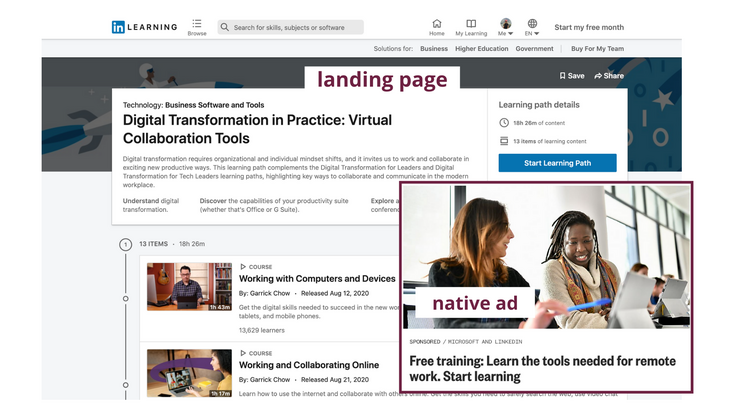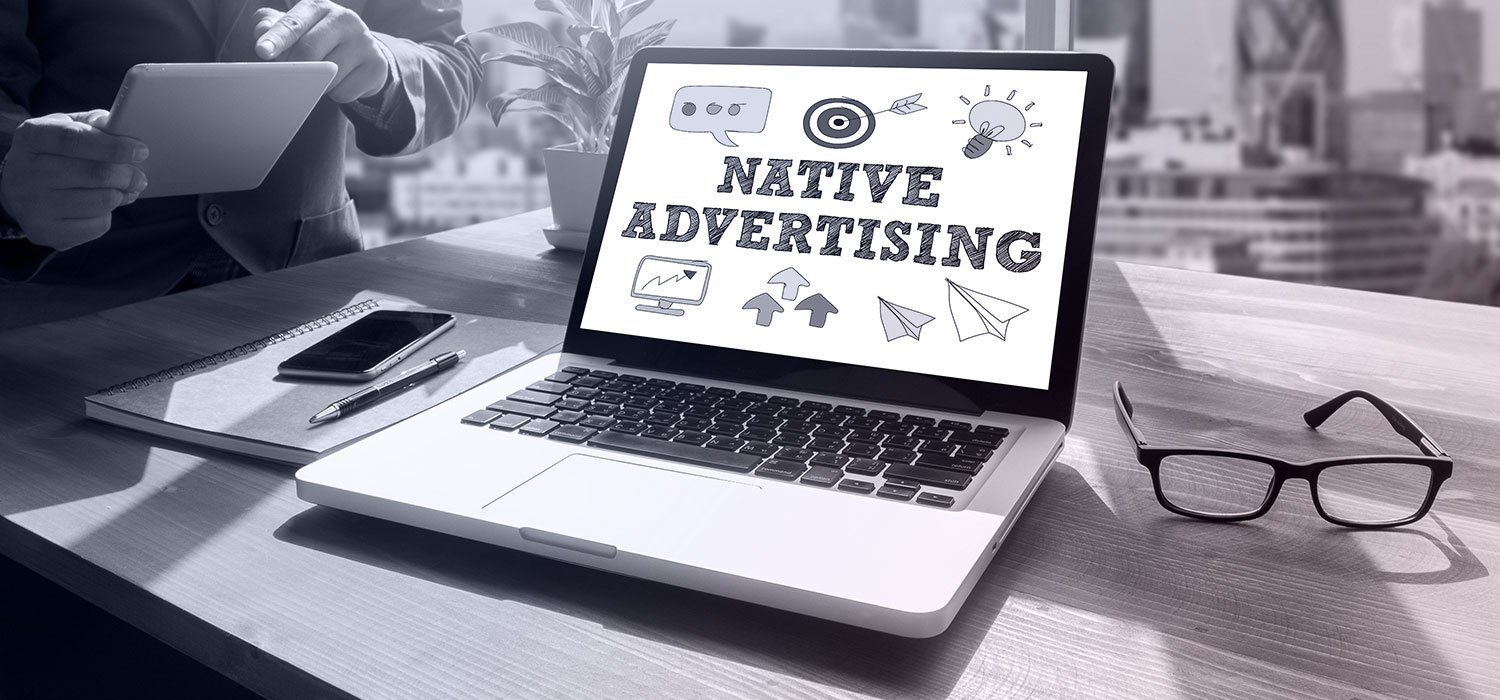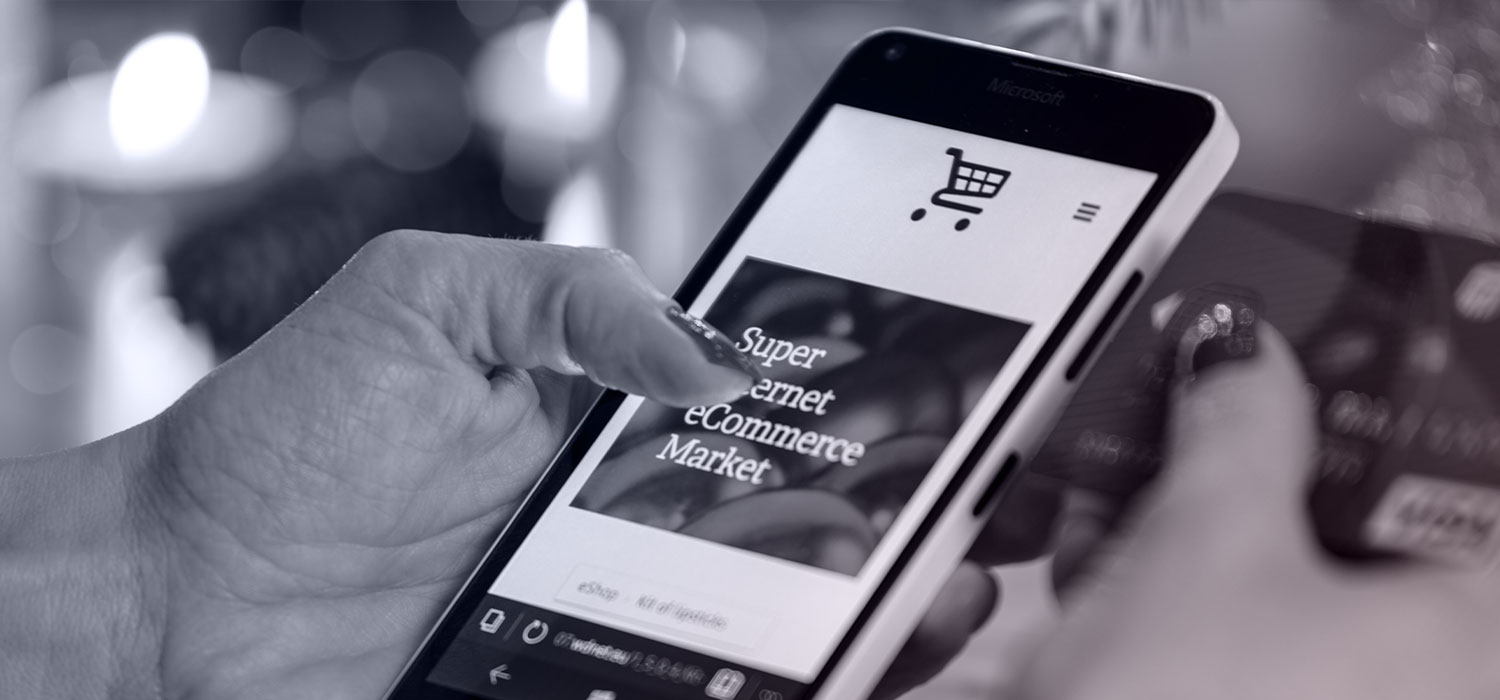Interested to find out more about how our contextual advertising can help you boost your brand?
For Advertisers For PublishersGet the latest news about Contextual Advertising right into your inbox!
Native advertisements stand for paid ads that blend well with the content around them. The ads are created in such a way that their design and layout align with the non-promotional material that surrounds them. Their format thus ensures that they blend seamlessly with the content.
Some common examples could be a recommended article towards the end of another article talking about a similar subject or a text ad that appears within paragraphs of content. Even a banner ad (leveraging contextual advertising concept) which appears next to relevant content, without standing out like a sore thumb is a pertinent example.
According to a study undertaken by IHS and Facebook in 2020, native ads saw a 20-60% higher engagement rate as compared to their normal display banner counterparts. Retention rates also registered a 3X increase. Since they also fit perfectly across websites and apps, they appear less intrusive and are more visually engaging . They drive greater engagement and enable brands to build awareness in a natural way. Let’s look at some trends that 2021 can expect from native ads:
An increasing focus on mobile
As our devices shrink in size and our time spent on them increases, the focus of advertisers is shifting to mobile. Native advertising was interestingly developed to enhance the mobile browsing experience. Its scope, however, has been much wider, covering multiple formats, devices, and environments. A Statista research from 2021 found that the number of mobile users worldwide is 7.1 billion. So, we can imagine how important a seamless mobile experience is. Large buttons/CTAs, overlapping text on the creatives, or difficult-to-scroll content will no longer cut it. Native ads have been evolving to be more agile and responsive to cater to mobile users in a better way.
Emerging formats and sites
According to a survey by Cisco, 80% of the total internet traffic will come from video by the end of 2021. Videos are quicker, interactive, and a lot easier to digest. The same holds for video native ads. That is of course not to say that text ads wouldn’t work as they too have their place in providing quick information/benefits.
Native advertising has emerged to be able to adapt itself to different formats – be it text, video, or in-screen. The ads are moving away from social and search, to cover relevant websites where publishers can help advertisers showcase their ads through in-feed native ads.
All hail contextual and programmatic advertising:
Customers place more trust on ads shown on a premium, relevant website compared to a hugely crowded social media feed. But, the ad placement matters the most, as promoting an ad next to irrelevant content might grab fewer eyeballs and even fewer clicks. While native helps place the ads, contextual advertising ensures better delivery of the ads alongside relevant content.
Advertisers need to continuously test which websites that are suitable to their products. They need to work closely with publishers to target relevant content for their ads. Ads on premium sites generate 50% more engagement when compared to ads placed on social media platforms. A good contextual advertising platform encompassing multiple formats should be able to provide brands the flexibility and context to place ads next to relevant sites. Thus, brands can resonate with people, irrespective of the format, place, or time.
Personalized targeting
Native ads which are contextual have now become more personalized. By leveraging ML and AI, ads can be personalized as per the website that they are promoted on. We have been at the forefront of this massive shift. An almost human-like analysis is undertaken by our platform to help our brands convey the right messages to their target audience. All this is done without any dependency on cookies. These ads ensure better targeting, relevant communication, and advertisers also benefit from better ROI and enhanced metrics.
A few good examples
Native advertising has been a key strategy for a long time for brands to communicate with their customers. Let us look at two such examples that stand out:

The above snapshot shows a paid ad (from LinkedIn / Microsoft) promoting a course that can help people manage remote work with ease. This ad was posted next to videos / content talking about collaborating online. The ad, apart from being native, is also contextually relevant.
Red Bull had shown some extreme air stunts in a six-minute video with their branding splashed all across in a fun, yet relevant way – planes, parachutes etc. It truly displayed the brand’s famous slogan “Red Bull gives you wings”
Conclusion:
As the world gets ready to face a cookie-less future, context-driven native ads can be a robust strategy for brands to stand out from the crowd, while being relevant to their target audience.
The global native advertising market is set to rise from $85Bn in 2020 to a whopping $402Bn in 2025. The time is ripe for advertisers and publishers to consider smarter solutions that could provide more value to their customers while bringing in better ROI. Creating good content is great, but what matters is promoting them through the right channels.
We can help your brand craft smarter outreach programs through relevant context-driven ads. Contact us today!







